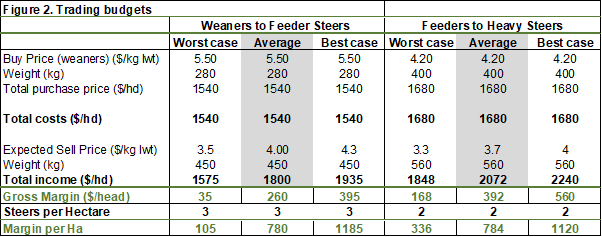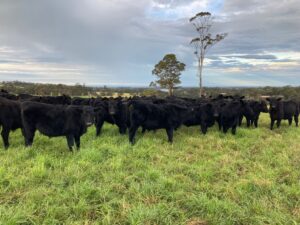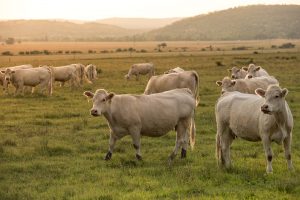With young cattle prices reaching some extreme highs, plenty of feed about, and a La Niña forecast, there is plenty of thought going into what cattle are best to buy. We had a query last week on whether heavier feeder type cattle might be less risky than buying light ones, so we’ll have a look at the numbers.
A quick look through AuctionsPlus results shows some very expensive weaner cattle are being sold at the moment. Big lines of black steers under 300kgs are hard to find, with one lot on AuctionsPlus making 665¢/kg lwt last week. That’s right, $1660 for 250kg lwt steers. In fact light weaners are so hard to find we can’t really get an average, but we’ll use 550¢/kg lwt.
Light steers are at a large premium to feeders, which are still close to record values, with 400kg steers making around 420¢/kg lwt. The question we had was how the risk and margin profiles compare, given the extreme premiums on light cattle.
Figure 1 shows how cattle prices have moved over the last four years. We can see that it is unusual for young cattle (represented by the EYCI) to be at a premium to feeders, but it’s not unusual for feeders to be at a premium to Heavy Steers. Just looking at this makes feeders seem like better buying, and this is confirmed when we look at margins.
Growing light steers into feeder steers is a preferred option for many cattle traders. It is easier than growing out to finished cattle, and light cattle, in theory, are cheaper in dollars per head.
The alternative we are looking at is buying heavier steers, which might be destined for a feedlot, and carrying through to Heavy Steers. Finishing cattle might be a bit harder than growing feeders, but the price difference between buy and sell is smaller.
Figure 2 shows some rough trading margins, with the heavier cattle trade coming out on top on a dollar per head basis. The heavier cattle will eat more, so to account for this we’ll use 2 per hectare as opposed to 3 for the lighter cattle. At expected and high sell prices the trades come out similar, however, if the market falls, the heavy steers will turn a much better margin.
What does it mean?
With young cattle running hot, buying heavier cattle will offer better returns on a dollar per head basis, and is less risky if the market corrects. Buying fewer cattle also means the initial outlay will be lower, at $3,360 per hectare vs $4,620 for the three lighter steers.
There is also the problem of getting lighter steers, with supply very thin. If we lift the buy price to 600¢/kg lwt, margins are squeezed and risk is heightened.
Have any questions or comments?
Key Points
- Extreme light cattle prices has traders looking for other opportunities.
- Buying heavier steers gives similar gross margins per hectare, and is less risky.
- With light cattle supply very tight, buying feeder weight steers might offer a better trade.
Click on graph to expand
Click on graph to expand
Data sources: MLA, Mecardo













